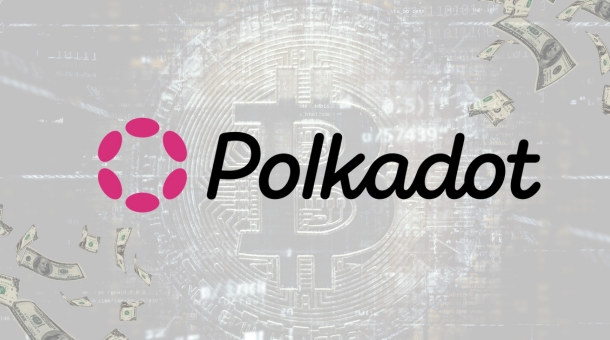How Polkadot Differs from Other Cryptocurrencies
Cryptocurrencies have taken the financial world by storm, with Bitcoin, Ethereum, and many others capturing significant attention.
Among these digital assets, Polkadot (DOT) has emerged as a unique and innovative blockchain platform. But how does Polkadot differ from other cryptocurrencies?
In this article, we will explore the distinct features of Polkadot and how it stands out in the crowded crypto space.
Understanding Polkadot
Polkadot is a multi-chain blockchain platform created by Dr. Gavin Wood, a co-founder of Ethereum. It aims to enable different blockchains to interoperate and share information securely and efficiently. Launched in May 2020 by the Web3 Foundation, Polkadot is designed to support various interconnected sub-chains called “parachains.”
How Polkadot Differs from Other Cryptocurrencies
Interoperability
- Polkadot: One of Polkadot’s most significant features is its ability to connect multiple blockchains, allowing them to communicate and share data seamlessly. This interoperability is achieved through its Relay Chain, which acts as the central hub for all connected parachains.
- Other Cryptocurrencies: Most other cryptocurrencies operate on isolated blockchains, limiting their ability to interact with each other. While some projects like Cosmos also focus on interoperability, Polkadot’s unique architecture offers a robust solution for cross-chain communication.
Scalability
- Polkadot: By design, Polkadot supports multiple parallel blockchains, which significantly enhances its scalability. Each parachain can process transactions independently, reducing the overall load on the network.
- Other Cryptocurrencies: Traditional blockchains like Bitcoin and Ethereum face scalability issues as all transactions are processed on a single chain. This can lead to congestion and higher transaction fees during peak times.
Governance Model
- Polkadot: Polkadot features an advanced governance model where DOT token holders have a say in the network’s decision-making process. This decentralized governance allows for continuous upgrades and improvements without the need for hard forks.
- Other Cryptocurrencies: Many cryptocurrencies, including Bitcoin, have more rigid governance structures that can lead to contentious hard forks when major changes are needed. Ethereum is moving towards a more decentralized governance model with Ethereum 2.0, but it still has a centralized foundation influencing its development.
Consensus Mechanism
- Polkadot: Polkadot uses a unique consensus mechanism called Nominated Proof-of-Stake (NPoS). In NPoS, nominators select validators, who are responsible for securing the network and validating transactions. This system aims to enhance security and decentralization.
- Other Cryptocurrencies: Bitcoin uses Proof-of-Work (PoW), which requires significant computational power and energy consumption. Ethereum is transitioning from PoW to Proof-of-Stake (PoS) with its Ethereum 2.0 upgrade, which will make it more energy-efficient but still different from Polkadot’s NPoS.
Development Environment
- Polkadot: Polkadot is built using Substrate, a modular framework that allows developers to create custom blockchains tailored to their specific needs. This flexibility accelerates development and innovation within the Polkadot ecosystem.
- Other Cryptocurrencies: While Ethereum also supports custom decentralized applications (dApps) through its smart contract functionality, Polkadot’s Substrate framework offers more extensive customization options for building entire blockchains.
Economic Model
- Polkadot: The DOT token serves multiple purposes within the Polkadot ecosystem, including governance, staking, and bonding. This multi-functional use of DOT tokens ensures active participation and long-term commitment from the community.
- Other Cryptocurrencies: In contrast, many cryptocurrencies have a single primary function for their tokens, such as Bitcoin’s use solely as a digital currency or Ethereum’s ETH token for transaction fees and smart contract execution.
Why Polkadot is Gaining Popularity in India
India, with its growing interest in blockchain technology and cryptocurrencies, has seen a surge in Polkadot’s popularity. Here are a few reasons why Polkadot is becoming a preferred choice among Indian investors:
- Innovation and Potential: Polkadot’s innovative approach to interoperability and scalability appeals to tech-savvy investors looking for cutting-edge solutions.
- Community and Support: Polkadot has a robust and active community that provides extensive support and resources for new users and developers.
- Investment Opportunities: As Polkadot continues to grow and develop, it presents lucrative investment opportunities for those looking to diversify their cryptocurrency portfolios.
Conclusion
Polkadot stands out in the cryptocurrency landscape due to its unique features like interoperability, scalability, advanced governance, and a flexible development environment.
For Indian investors and enthusiasts, understanding these differences is crucial for making informed investment decisions.
As the cryptocurrency market evolves, Polkadot’s innovative approach positions it as a significant player in the future of blockchain technology.
How Polkadot Differs from Other Cryptocurrencies How Polkadot Differs from Other Cryptocurrencies How Polkadot Differs from Other Cryptocurrencies How Polkadot Differs from Other Cryptocurrencies How Polkadot Differs from Other Cryptocurrencies How Polkadot Differs from Other Cryptocurrencies
